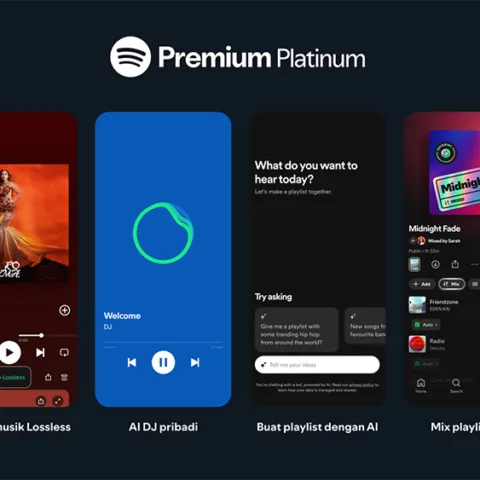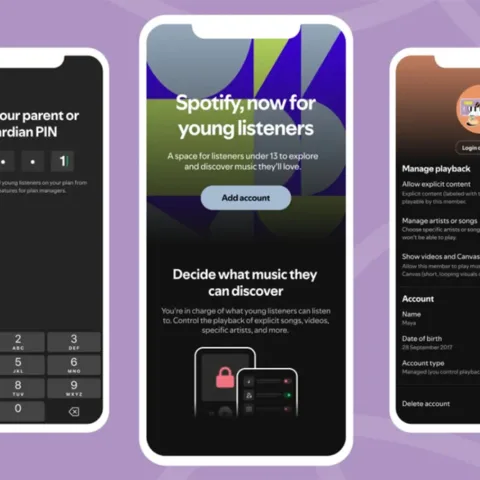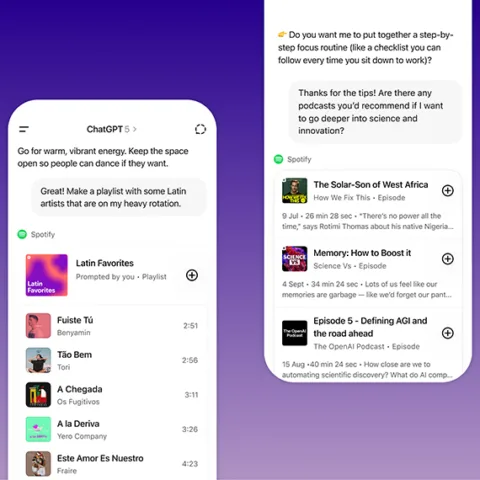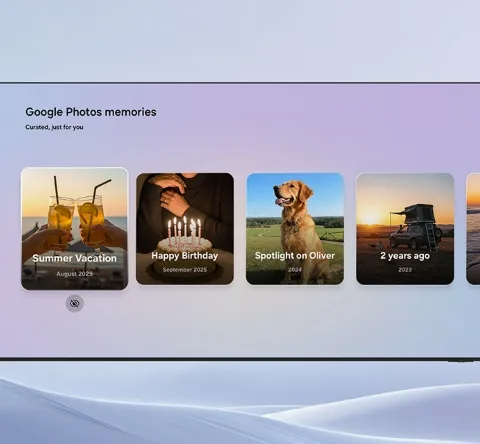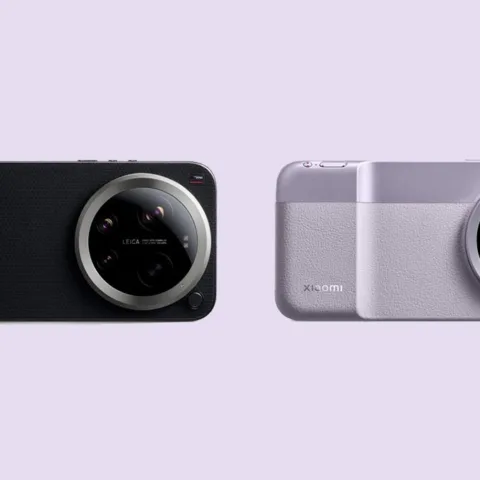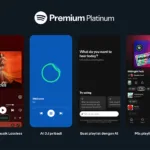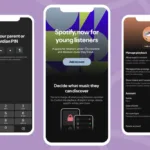This article by Daniel Ek is quite a treatise. I’m not sure if any of the numbers, especially those that have a currency symbol next to it, are true, yet it does revisit many arguments and myths surrounding music services and the music industry in general.
Before I go into any detail though, I would like to just point out that artists, while fully having the right to do so, are making a mistake in either rejecting Spotify’s streaming business model or pulling their catalogs altogether. Sure, in terms of dollar value, services like Spotify might not deliver the economies of scale of something like iTunes can deliver from downloads, but it doesn’t mean it won’t be larger in the future.
The fall of the CD era should be a great example for all people wanting to sell recorded music, that you shouldn’t put all your eggs in one basket. That being, at the time, the CD. Progress of technology should provide an almost limitless amount of business model interactions, each probably providing small initial value but as a whole, increasing the potential revenue gained. Case in point, a small convenience store might only sell 10 ice creams a day, but imagine if you have access and distribution to 10,000 stores. The numbers don’t look so small anymore, do they?
Paid provided monetization without scale, free reached scale without monetization, and neither produced anywhere near enough money to replace the ongoing decline in music industry revenue.
This is probably one of my favorite sentences in the article, if it is indeed possible to like a blog post. It’s quite telling, really, and answers a lot of questions that I myself had building music services one way or the other for the past few years.
Let’s visit the past again for a minute. Vinyl, cassette, and CD sales all experienced a peak, because there was simply no other way to access music (other than the media, which are decidedly not as on-demand as playing a recorded music product like a CD). Emphasis on no other way. Once there was another way to access music, through a combination of MP3 technology, CD ripping technology, and the Internet (with peer-to-peer file transfers over it), well of course CD sales dropped.
Interest in music remained high, it just became fragmented. So, the only reason CD and cassette sales scaled so much in terms of sales and distribution was that there was no other way for a listener to obtain music. Once the control of distribution was gone, gone also was the scalability of a music CD as a “paid music product or service”. This is also why despite everything, recording companies still put a high emphasis on anti piracy efforts, because they want back the control of music distribution (not that this is wrong). The sad thing is, in the early years for the 21st century, they focused on piracy, instead of building new, and controllable, music distribution channels.
So the question is, do music services actually scale? More specifically, do digital music services scale?
Some people would mention iTunes. Others may mention this or that telco-based service (like Indonesia’s runaway success with ringback tones, at least until 2011). Both have similarities actually. The iTunes Music Store and the ringback tone service are built on an existing platform, or ecosystem, if you will.
iTunes Music Store runs on iTunes, with the Mac and iDevices ecosystem, all willing customers. Ringback tone services require a telco network, which would already have customers. So yes, [digital] music services do scale, when built on top of an existing customer base. But it still requires some efforts in terms of marketing and making sure the product offered has some interest in the customer base.
Another case in point: why would ringback tone services do so well on a telco, while on the same telco, music download services have so far failed to garner much attention? The devil, as they say, is probably in the details.
Let’s compare iTunes Music Store to other similar music download services. Out of all the music services launched since iTunes Music Store until today, the strongest remaining at least on a global level, are probably AmazonMP3 and Google Play Music. Both have pre-existing customer bases. So where should a new music service look for scale?
Many services, not just music, offer some sort of Facebook integration. Again following the logic that the service will be offered to the existing customer database existing on Facebook (or any other social network, for that matter). Emphasis on many services, they need to compete for attention. Competing for attention usually means PR stunts or ad spend, the latter which Facebook will gladly help you if you want to part with your money.
Spotify is probably the outlier here, as they have managed to scale a music service not from pre-existing customer database, although it looks like their strategies for new markets still look for leverage on other people’s customers (i.e. telcos). What Spotify has managed to do is the exception, not the rule. For one Spotify, we could probably list down the many other music streaming services that have existed that didn’t scale as well as Spotify did. I won’t speculate how many of their earned dollars go into PR and marketing, but it’s definitely not zero.
So, theory number one: digital music services, without the existence of pre-existing customer base, do not scale. Even the free ones.
My second theory has to do with the virality of music services, as opposed to advertising spend. Sure, by creating a digital music service, the theory is that it will be compelling enough for people to share on social media and at some point become viral. But does this really happen? And I’d need to point out that the virality needs to be sustainable, to a certain degree.
I don’t think the virality works, without pre-existing customer base. Social media doesn’t count as our timeline is now filled with brands and their “influencers” selling this and that, with the potential for virality decreasing with every increase of content followed on timeline.
That leaves ads.
Some startup guys will tell you that “there’s no such thing as traction without some sort of advertising or promotion”. Of course that depends on a lot of things, but not everyone will become the next Instagram or WhatsApp. Ads are fine and in most cases necessary. It’s just the matter of making sure the ad spend is proportional to income (if any). A large ad spend combined with a smart campaign strategy could induce virality, but would require continued ad spend to maintain it. Sure, we could talk about growth hacking or any other sort of startup strategy thingy, but it doesn’t seem to apply to services based on recorded music.
Without pre-existing customer base and without at least some ad spend, music services do not scale. So what we need are more music services, instead of less, and a high number of music services is actually in the artist’s (and probably label’s) best interest, even when limited to services that distribute recorded music products. As the best way to deliver more music services is through digital, then a digital way to manage these services, at least from the content owner’s perspective., shouldn’t be too far-fetched.
I’ve written many times that there won’t be a “next big thing” for music. All the elements of the value chain and the market itself is already much too fragmented to do that. It does not mean underlying mechanisms cannot be made more efficient and pooled into one source (or a smaller number of sources), like a single shared resource of music assets that multiple services can access, who compete based on differentiating on services, strategy, and many other combinations of tech and ingenuity.
Transparency of licensing, deal approvals, and royalty payments can also benefit the growth of the industry as a whole. Trust in licensing deals with strict guidelines for compliance should get rid of any reason for artists, recording companies, and publishing companies to demand high advance payments or minimum guarantees, which are the biggest reason why many companies do not want to enter the music services space. Of course proper legal infrastructure needs to be in place that actually encourages creation, instead of penalizing usage. Copyright regulation should also encourage the growth of businesses distributing works by providing clear guidelines for licensing and not clear guidelines for civil lawsuits.
But I want to make something clear. The days of making money purely from recorded music are probably long gone. A true artist or musician will need to do more to have a full career in music, and this is possible, as many have already proved. This expansion from recording artist to, well, just simply artist, contains many small business opportunities here and there that will make a significant whole.
I’ll say it again. Selling recorded music has ceased to be scalable, so it does not make sense to be fixated on it. This also means that the traditional role of a recording company, which produces and distributes recorded music, is long overdue for a change.
[Illustration: Shutterstock]
–
This article has been republished with permission from Ario Tamat. Original source is from Medium.
Ario is a co-founder of Ohdio, an Indonesian music streaming service. He worked in the digital music industry in Indonesia from 2003 to 2010, and recently worked in the movie and TV industry in Vietnam. Keep up with him on Twitter at @barijoe or his blog at http://barijoe.wordpress.com.



